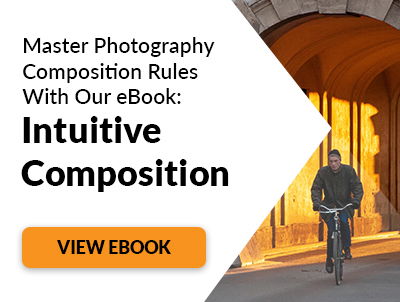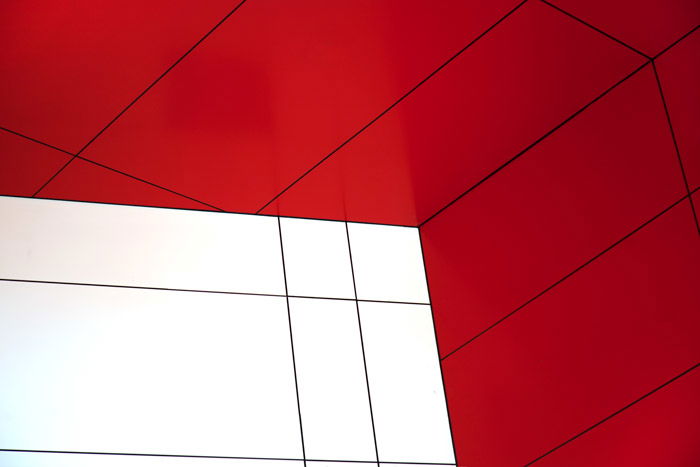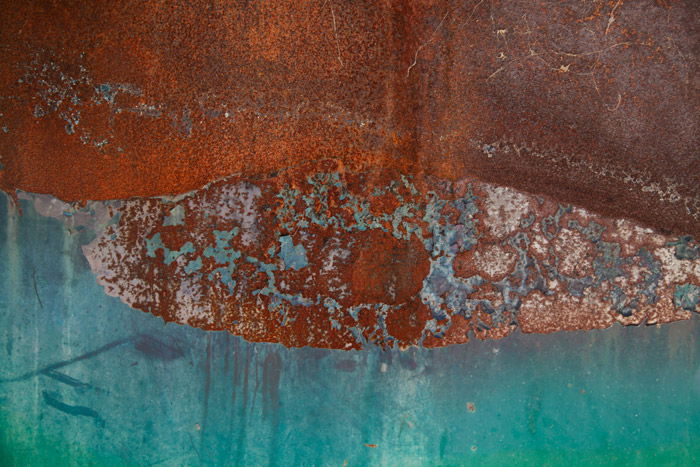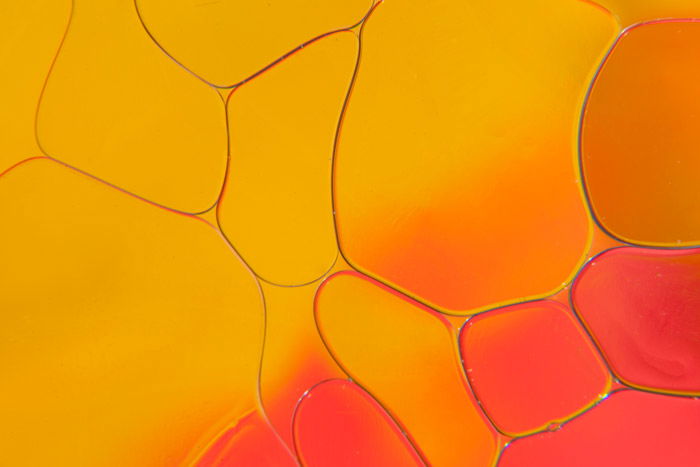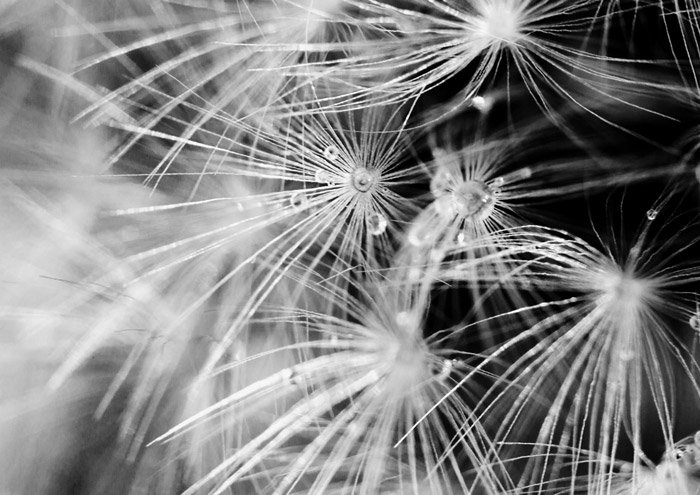But even scholarly books and articles have struggled to determine the exact definition of abstract art. The scope for creativity in abstract photography is endless, so it can be hard to know where to start. Here are ten creative photography ideas to get you going.
Photography Ideas: Looking at Lines
Abstract photography doesn’t present a subject in a literal way. It communicates more through form and color. But this can offer photographic freedom. The line is one of the most basic elements of visual composition. It helps divide an image into portions for the eye to break down and helps unite elements in a photograph. Leading lines, as the name describes, lead a viewer’s eye around an image or towards a specific subject. They’re sort of like a visual highway. Soft, organic lines denote a sense of flow or transition, like waves lapping on a seashore. Sharp, artificial lines indicate a feeling of immediacy or modernity. Vertical lines lend solidity to an image. And horizontal lines emphasize balance and depth. With so many uses, investigating line in abstract photography is a must. Next time you head out shooting, concentrate on finding lines. Then incorporate them into your photography ideas. Try focusing on architectural and urban elements for photography ideas. Strong, bold lines are more abundant in artificial landscapes. See how many different types of lines you can find. Curvy, straight, colored, bold – once you start looking, possibilities abound!
Explore Texture
Photographing texture is creating an image a viewer can ‘feel’. Over our lives, our minds curate a library of textures and their associations to objects. Abstract photography is independent of depicting the objective subject matter. But our minds still associate visual surfaces with specific sensations. Rounded or fluffy textures in an image convey a different feeling than rough, jagged imagery, for example. By incorporating textural details into a photograph, we can appeal to a viewer’s innate sense of the world through touch. This is the case even if the image is an abstracted one. Have a look around for interesting or unusual textures to incorporate into your abstract photography ideas. And don’t forget to have a feel too! Feeling textures yourself will help you understand how to photograph them better in terms of lighting and camera angle.
Appreciate Color
Everyone knows how powerful the nature of color can be. To the eye, blue is a soothing, centering color whereas yellow is bright and peppy. These associations impact what we ‘take’ from an image, or how we appreciate a photograph. An abstracted image that incorporates a strong color scheme draws the viewer’s attention to color as an abstract in itself. Try prioritizing color as the center of interest in your photography. You’ll often find that a colorful surface makes for fascinating abstract photography ideas. No matter the subject!
Remove Color
Having just talked about color, there is, of course, another option: removing color altogether! Without color, the eye looks for alternative visual references in an image. That’s why black and white photography is a great way to isolate shape and form. It also accentuates the light and shadow of an image, creating more depth in contrast. A black and white scheme tends to distance the subject from reality. Because humans see the world in color, a black and white scene gives us pause to look at a photograph more closely. In abstract photography, this limits any lingering visual references to a figurative object. So if you want to focus purely on the form of an abstract photograph without distraction, black and white is the way to go. Try visualizing what you see in black and white before taking the shot. You’ll find it easier to compose your photograph that way.
Play With Patterns
Repetition in life can get a bit…well, repetitious. But that’s not necessarily the case in abstract pattern photography. Patterns in abstract photography highlight the geometry of a scene. And they do so without the extra details of the surrounding environment. The subject can be organic or inorganic in nature. It can be set in precise order or scattered across an image at random. Abstract photography doesn’t need context. This means you are free to photograph patterns however you’d like. The more you develop your photographic eye, the more pattern will reveal itself to you. Soon, you’ll begin to see your world change from scenery to opportunity. Have a closer look at the environment around you. Don’t be afraid to get up close and personal to fill the frame with the intricate patterns and designs you discover. Check our articles on making amazing abstract photography from oil and water or photoelasticity for a start!
Simplify
Sometimes less is more in a photograph. Abstract photography doesn’t always have to be about ‘building up’ an image, but rather, ‘taking away’ elements to create something new. Abstraction affords us the opportunity to experiment and get in touch with the building blocks of photography. Simplification really reinforces this. It strips back an image to get to the heart of a photograph. It’s all about seeing how an image works and how we comprehend what we see.
Shape in Abstract Photography
Shape is paramount in abstract photography ideas. The shape of a subject (or a number of subjects) and how they interact within the photo frame is a key area of abstract photography. Shape is built by contrast. But focusing on the shape itself is a way to construct an abstract photograph in a deliberate attempt to convey space and substance. The shape can also often make a psychological connection with a viewer. This is due to their associations with particular visual structures. For example, a red octagon could remind a viewer of a traffic stop sign. This is due to our innate instinct to make sense of shape by associating it with past experiences. One way to investigate shape is to experiment with “Pareidolia”. This is a psychological phenomenon where the mind sees a familiar pattern where none exists. When we see faces or objects in cloud patterns or a ‘man on the moon’, that’s pareidolia. The shape also dictates the way light behaves on a surface. By investigating shape in the abstract, we are exploring the nature of photography, how we see our most important medium: light!
Macro Photography Projects
Macro photography, like abstract photography, is a unique type of photography that hones in on content over context. And the two work well together. You can focus on the point of interest in an image and leave the less important details out. Your frame is filled with only the immediate subject. You’ll probably need a macro lens or extension tubes to get close enough to the subject. But macro photography itself is quite a straight forward process. First, set your camera on a tripod with your lens of choice mounted, then move the camera so that the lens is physically close to the subject. Set your exposure and focus with manual focusing mode. Once you are happy with your macro photography ideas and camera settings, click away!
Slow Down
Sometimes it’s nice to take a breather and slow down a little. And it’s the same with slow shutter speeds. Experimenting with shutter speeds below 125 may induce camera shake. But when it comes to abstract photography ideas, that might be just what you’re after. At lower shutter speeds, a period of time is collapsed into a single image. The abstract nature of the resulting images can create dynamic artworks that explore the very nature of photography. Light trails appear, landscapes and faces become blurry, movement is recorded in succession. In an image created with slow shutter speeds, everything comes to life.
Look at Shadows
Exploring the relationship between light and shadow is a fundamental aspect of photography. But often, shadows are overlooked in favor of their counterparts. Shadows draw attention to qualities around us that go unnoticed, adding depth and intrigue. And because they hold their own against highlights and grey tones, shadows also add contrast. Photographing shadows is one of the best ways to capture an unusual, eye-catching subject. A shadow with a strong outline and a recognizable shape may connect with the experience of a viewer. But an abstract shape connects with the viewer’s imagination. Don’t be afraid to photograph unusual looking shadows. Abstract photography has very little in the way of photographic ‘rules’. The scope for creative photography ideas is almost endless. If you feel like your photographic practice needs a little breathing room, or you’re looking for something fresh photography ideas, grab your camera and shoot the abstract!

